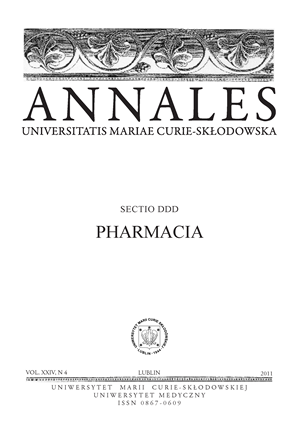Monte carlo simulation implementationto investigate uncertainty in exposure modeling
DOI:
https://doi.org/10.12923/Keywords:
exposure assessment, modelingAbstract
This study used Monte Carlo (MC) simulation to examine the influence of uncertainty on an exposure model and to determine whether a difference exists between workers groups in asbestos wastes transportation and decontamination process. Data on work practices and conditions were gathered in interviews with long-serving employees and pilot monitoring process at the asbestos contaminated sites. With the use of previously developed deterministic modeling techniques and likely distributions for model parameters, MC simulations generated exposure profiles for the two monitored job conditions. The exposure profiles overlapped considerably, although the average estimated exposure for one job site was approximately double that of the other. However, when the correlation between the model parameters in the two sites was considered, it was concluded that there was a significant difference in the estimates. Models are increasingly being used to estimate exposure. Different work situations inevitably result in different exposure estimates. However, it is difficult to determine whether such differences in estimated exposure between worker groups are simply the result of uncertainty with respect to the model parameters or whether they reflect real differences between occupational groups. This study demonstrates the value of MC simulation in helping define the uncertainty in deterministic model estimates.
References
1. Boffetta P., Saracci R., Andersen A., et al.: Cancer mortality among man-made vitreous fiber production workers. Epidemiology. 3, 259, 1997.
2. Checkoway H., Savitz D., Heyer N. : Assessing the effects of nondifferential misclassification of exposures in occupational studies. Appl Occup Environ Hyg. 6, 528, 1991.
3. Cherrie J.W., Bodsworth P.L., Cowie H.A. et al.: A report on the environmental conditions at seven European ceramic fibre plants. Edinburgh: Institute of Occu¬pational Medicine. IOM report no TM.89/07, 1989.
4. Cherrie J.W.: The effect of room size and general ventilation on the relationship between near and far-field concentrations. App Environ Occup Hyg. 14, 539, 1999.
5. Cherrie J.W., Schneider T.: Validation of a new method for structured subjective assessments of past concentrations. Ann Occup Hyg. 43, 235, 1999.
6. Cherrie J.W., Schneider T., Spankie S. et al.: A new method for structured, subjective assessments of past concentrations. Occup Hyg. 3, 75, 1996.
7. Cox L.A. : Reassessing benzene risks using internal doses and Monte-Carlo uncertainty analysis. Environ Health Perspect. 104, 1413, 1996.
8. Daniell W., Claypole K., Checkoway H. et al.: Neuropsychological function in retired workers with previous long term occupational exposure to solvents. Occup Environ Med. 56, 93, 1999.
9. Dick F., Semple S., Osborne A. et al.: Organic solvent exposure, genes, and risk of neu-ropsychological impairment. Q J Med. 95, 379, 2002.
10. Friar J.: The assessment of workplace exposure to substances hazardous to health: the EASE model. Bootle (UK): Health and Safety Executive. 1996.
11. Glass D., Adams G., Manuell R. et al.: Retrospective exposure assessment for benzene in the Australian petroleum in¬dustry. Ann Occup Hyg. 44, 301, 2000.
12. Groat S., Kauffer E., Lovett M. et al.: Epidemiological research in the European ceramic fiber industry vol. 1 (Workplace concentrations of airborne dust and fibers). Edinburgh: Institute of Occupational Medicine. report no TM.99/01, 1999.
13. Kromhout H., Symanski E., Rappaport S.M.: A comprehensive evaluation of within- and between-worker components of occupational exposure to chemicals. Ann Occup Hyg. 37, 253, 1993.
14. Nicas M., Jaycock M. : Uncertainty in exposure estimates made by modeling versus monitoring. Am Ind Hyg Assoc J. 63, 275, 2002.
15. Semple S.E., Proud L.A., Tannahill S.N. et al.: A training exercise in subjectively estimating inhalation exposures. Scand J Work Environ Health. 27, 395, 2001.
16. Shade W.D., Jayjock M.A.: Monte Carlo uncertainty analysis of a diffusion model for the assessment of halogen gas exposure during dosing of brominators. Am Ind Hyg Assoc J. 58, 418, 1997.
17. Sweeney L.M., Tyler T.R., Kirman C.R. et al.: Proposed occupational exposure limits for select ethylene glycol ethers using PBPK models and Monte Carlo simulations. Toxicol Sci. 62, 124, 2001.
Downloads
Published
Issue
Section
License
Copyright (c) 2011 Authors

This work is licensed under a Creative Commons Attribution-NonCommercial-NoDerivatives 3.0 Unported License.


